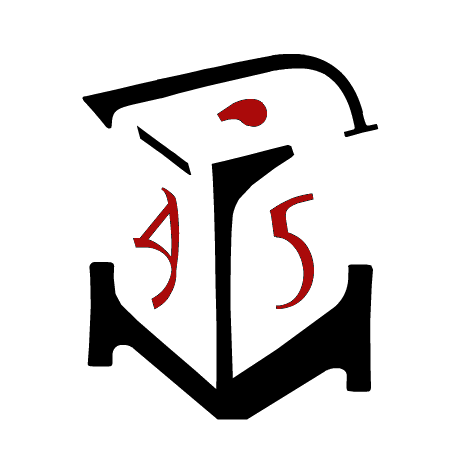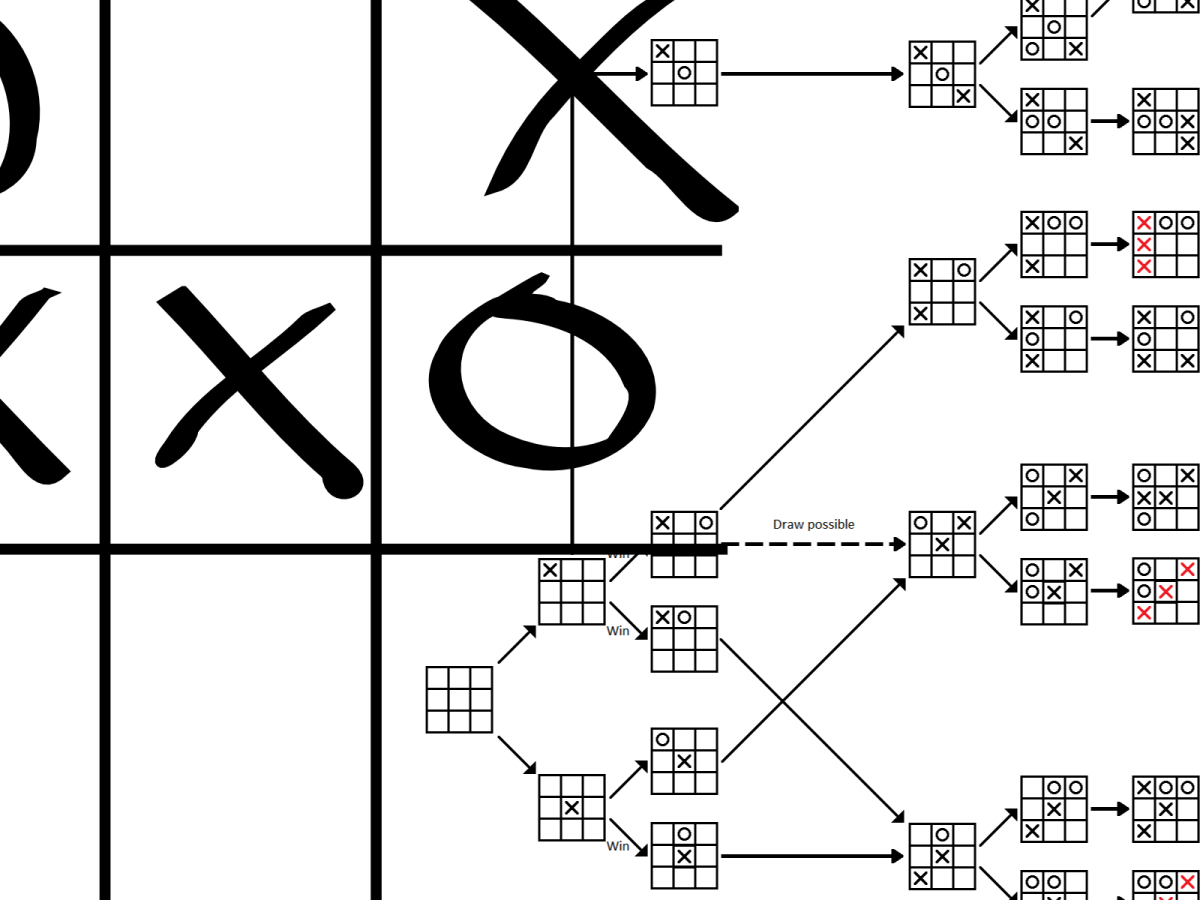NOTE:
This post was updated on 6 Jan. 2023. I added more outstanding games, tweaked the categories and their entries, and revised the prefatory sections to reflect the current upheaval around OGL 1.1.
Games marked * feature open licenses that allow you to create and sell your own content.
Imagine this:
Each weekend, you and your friends race your fixed-gear bikes to the top of a hill. It’s a contest you look forward to all week, every week. Win or lose, it’s your favorite thing to do together.
But one day, you all get cheap mountain bikes at a garage sale. And that weekend, you suddenly realize there is a much more efficient way to have fun.
Maybe you also realize the hill is holding you back. Maybe you start having even more fun racing through the twisting trails of a nature park. Or maybe you realize you don’t need competition, either, and that you prefer the more casual adventure and fellowship of just cruising through the streets and countryside.
These are experiences that riding a fixie up a hill is never going to deliver.
And the same lack exists in mainstream TTRPGs.
This post isn’t a polemic against D&D; another diatribe isn’t going to help anyone. D&D and other prominent titles can deliver a lot of different experiences, but they’re not optimized for everything players may want to pursue in their games. And in the not too distant future, D&D may become an unacceptable financial burden to both players and content creators.
Due to their nature as mass-market products, D&D and other notable titles aim for the lowest common consumer denominator. This grants them the best chance of capturing the largest possible market share. As a result, they can neither retain the interest nor satisfy the desires of all players.
And because of this gap in the market, indie RPG designers have stepped up to deliver a diverse assortment of tabletop gaming experiences at much more affordable prices, often for free. Some of these products aim to substitute the D&D experience as much as provide an alternative, but they are unfortunately often overshadowed by massive advertising budgets and subsequently rendered invisible in a growing market, which suffers a circumscribed awareness of alternative games.
This post is a short guide, based on my own limited experience, meant to help players find and appreciate new games that fit their interests and budgets in ways D&D and its ilk simply don’t. You can use it yourself as a roadmap for finding new games. You can share it with your friends so they can do the same. My goal isn’t to force any particular games on anyone but to help everyone bring new and compelling experiences to their tables.
Understand What Indie Is
The term “indie” means different things to different people. As in all media, there are various ways of defining what’s indie and what isn’t.
For the purpose of this guide, indie can be one person sitting at a laptop, working nights and weekends on no budget, and posting their games on digital distribution platforms. It can also be small publishers producing zines or even glossy hardbound volumes. And it can be anything/everything in between.
Indie isn’t longstanding and/or corporate-backed franchises like D&D, World of Darkness, Call of Cthulhu, and the like. Indie designers and publishers may produce content for these brands under third-party licenses, but that’s beyond this post’s purview. Instead, we’re focusing on games that compete with these notable titles by providing alternative, unique gameplay experiences.
You may disagree with me on this definition of indie, and that’s fine. As the market continues to develop, we’ll need to continually renegotiate the term’s meaning and boundaries. But my purpose here isn’t to nail down a strict definition, only to create the broadest possible scope of new opportunities.
Define Your Interests
If you want to explore alternatives to D&D, the first question you should ask yourself is: what kind of experience do I want?
To help you answer this question, I recommend reading The Retired Adventurer’s Six Cultures of Play, which describes broad categories of player motivations and activities. Your own desires may not fit neatly into any of these categories, but the writeups should at least orient you to the types of experiences other players pursue. Then you’ll be able to better define what you want out of your RPGs.
Additionally, Jon H. Kim’s A Brief History of Fashion in RPG Design discusses periods and movements the hobby and industry underwent from 1974 through the early 2000s. Understanding these may also be helpful for identifying your preferred experience and tracking down games that deliver it.
Adjust Your Expectations
Every game is a different experience, and that difference can be drastic regardless of which side of the screen you’re sitting on. There are no universal guidelines for how to play games or what they should deliver. However, there are a couple general notions that may help you shed preconceived expectations about RPGs so you can approach new games on their own terms.
Rulings, not Rules
Most indie games lack the sprawling, expansive rulesets that characterize D&D and its derivatives. For example, Pathfinder provides specifications for grappling a creature two size categories larger than you. In Knave, there are no specific rules for grappling. Instead, it has a general procedure for “stunts” and another for opposed contests of strength. Other games may not provide an option other than making a strength test. So sometimes, the best way to handle an action will be ambiguous. Without a proscribed procedure for a specific situation, the GM must decide how to use the existing rules to deliver a fair outcome.
That’s making a ruling rather than referring to rules. There are two benefits to this approach. First, it speeds play; no one has to comb through books and then scrutinize minutiae. Second, it creates greater flexibility by reducing the compulsion to act strictly according to the mechanics. Instead, it encourages freeform use of the mechanics to achieve a desired outcome.
Tools, not Templates
When faced with an obstacle, many players’ first instinct is to look at their character sheets and use the information to determine what they’re capable of doing. However, most characters in indie games aren’t going to have sprawling lists of skills, feats, abilities, etc. This doesn’t make characters less powerful or effective; it makes them more fluid and versatile.
The key to leveraging that fluidity and versatility is using character sheets as tools for action rather than as templates that dictate action. More specifically, the information on a character sheet is an entire toolbox for creative problem solving. Use those components to invent opportunities for action rather than using them to place limits on what you can imagine.
Start Super-Lite
If you’ve only ever played D&D, my personal advice is to try a super-lite or minimalist game. This will provide a solid contrast that will help you understand how different approaches to formal systems all have their own advantages and limitations.
My first recommendation is A Dragon Game by Chris Bissette (Loot the Room). It’s extremely lean, but it’s still robust enough to handle the sort of fantasy adventure players probably expect. Best of all, it is completely free (though if you like it, please kick Chris a few bucks for his time and effort), and it includes a designer’s commentary to help you understand why the game works the way it does.
Another strong option is Down We Go* by Markus Linderum (Plus One Exp), which delivers its full game mechanics and character sheet on a single page. Despite its simplicity, it still offers players a surprising amount of versatility in formally developing a fun, unique character. Additionally, all in-game rolls are player-facing; the GM will need to roll to prepare a dungeon but never during the action, which allows them to devote their attention to keeping play fun and interesting.
Finally, for a truly mechanics-lite (and qualitatively distinct) experience, Fiasco by Jason Morningstar (Bully Pulpit Games) strips out mathematics almost entirely and instead relies on more abstract rules to guide players through the narrative arc. Dice play important roles in the overarching plot, but very little time is spent rolling and reading them; the game is based almost entirely in story-building and improv, but the book provides plenty of guidance to ensure a creative, surprising, and satisfying experience.
Try Lite and Middleweight Games
So you’ve tried at least one super-lite game, but they don’t offer enough substance for you. You want something with a more expansive formal system, but you’re also eager to stay away from the laborious mechanics found in games like D&D, Pathfinder, and the like.
Worry not. There are a lot of options out there for you. A lot of options. Here are a few to start with.
Lite
Knave* by Ben Milton (Questing Beast Games) is a premier rules-lite system. It dispenses with fixed classes, allowing players to instead define (and redefine) characters through their gear, which grants them a lot of versatility. GMs likewise enjoy a lot of versatility, as Knave can accommodate a vast amount of content published for D&D and other systems. Rolls can be made on both sides of the screen or exclusively by the players, freeing the GM up to focus on other aspects of play.
Into the Odd* by Chris McDowall (Fria Ligan) is reminiscent of Knave in some ways, but it is thematically and mechanically distinct. Characters have simpler profiles, but the game incorporates additional mechanics—such as combat against groups and running an enterprise—that expand play in ways that make it a distinct experience. If you like Into the Odd, you may also be interested in McDowall’s more elaborate Electric Bastionland.
Middleweight
Errant* by Ava Islam is probably the best fantasy adventure RPG I’ve ever seen, and in my mind, it’s the top contender for the coveted title of D&D Killer. Ava designed it on the principles of minimizing rolls and streamlining mechanics to reduce their intrusion during gameplay without oversimplifying the system, and providing procedures that support the GM in every possible situation. The game is highly modular, so if you don’t like the way something works, you can change or replace it with little to no knockback on other subsystems. Errant is a painstakingly researched, well designed, thoughtful, and dynamic approach to old-school D&D-type games, and you can get the full text for free (but you should absolutely buy the book).
Whitehack by Christian Mehrstam offers a fantasy experience similar to D&D, but it maintains a very distinct feel with its significantly more streamlined system. Like Knave, it can accommodate a huge amount of RPG content published over the past half-century. However, it has a novel approach to character that really sets it apart, and it offers excellent advice and guidance to help GMs hone their craft. Additionally, it includes optional rules to help groups tailor their games to their desired experience.
Forbidden Lands* from Fria Ligan is probably the heftiest (and probably least indie) game on this list, but the starter box (2 books, a supplementary booklet, and a gameplay map with stickers) still comes in at about 50% of the price tag carried by the D&D core set. This sandbox-style fantasy RPG provides lots of tools for GMs alongside fairly straightforward mechanics (some aspects of spellcasting notwithstanding), making it a faster, leaner, lower-prep elf game that can accommodate various play styles and goals right out of the box.
Explore Targeted Themes & Focuses
Some games are very tightly designed around a particular idea or dynamic. Such emphases can be incorporated into D&D, of course, but these games are specifically built on those conceptual foundations, which become more integral and satisfying components of play.
Obviously, indie games explore many, many more topics and concerns than the ones listed below; these are just some that I’m particularly familiar with. Again, this post is just meant to give a small taste, not a comprehensive overview, of the topics and issues indie RPGs may concern themselves with.
Explore Genre Games
Frontier Scum* by Karl Druid (Games Omnivorous) takes players to the Lost Frontier, a nonhistorical Western setting. Players are wanted outlaws, and nature and civilization both want to see them dead. It features lightweight and creative mechanics that will both help and hinder their fight for survival, and the book itself is a stylish artifact in its own right. Be rootin’, be tootin’, and by God, don’t forget your hat.
Hell Night* by Gavriel Quiroga casts players in the roles of demons and dead souls whose motorcycles blaze a path of chaos and destruction across Earth for one single night. They must retrieve Lucifer and drag him back to Hell, or else the heavenly host will storm the infernal gates and re-establish order on their own terms. A simple 2d6 system, tons of tables, and outrageous art and graphic design bring the ’80s b-movie vibes and crank them up to 11.
Revolt against Oppression
Dog Eat Dog by Liam Liwanag Burke (Liwanag Press) assumes the familiar players-versus-GM structure but with a particular twist: the GM plays a colonizing culture, and the players all play indigenous people acting out against their oppressors. It is intended to be more realistic in setting and tone, but you can just as easily play it in the 16th century Americas as on 35th century Proxima b.
Invincible Sword Princess by Kazumi Chin likewise pits players against colonizers, but it does so with a more magical-girl fantasy flavor. Using their customized, high-power swords and their statuses as indigenous princesses, the PCs take the fight to their foes in an action- and character-driven guerilla rebellion.
Spire by Grant Howitt & Christopher Taylor (Rowan, Rook and Decard) is a science-fantasy game wherein players assume the roles of oppressed drow fighting back against their high-elven oppressors. It’s more complex than Dog Eat Dog or Invincible Sword Princess, but it’s still extremely elegant and efficient, and all mechanics are keyed entirely to the motif of resistance. Spire is one of the pricier entries on this list, but its big, glossy format will be familiar to D&D fans, and you’ll be ready to play with only a single book and an evening’s worth of reading.
Defy the Apocalypse
Mörk Borg* by Pelle Nilsson & Johan Nohr (Stockholm Kartell, Ockult Örtmästare, Fria Ligan) is a rules-lite game set in a brutal, cataclysmic metal-fantasy setting. The end of the world is nigh; it’s up to the characters to decide how they’re going to spend their time until the seventh psalm comes to pass.
ARC* by Momatoes (Exalted Funeral) is a genre- and setting-agnostic game whose central conflict revolves around the characters’ fight to stop a world-ending catastrophe. A real-time countdown creates powerful tension and pressures the players to stop certain doom.
Kingdoms by Sophia Tinney (in association with Exalted Funeral) is a pan-generational empire-building game set in a dark, horror-steeped world. Players will control successive generations of rulers who pursue military might, technological advancement, and cultural progress … so that a world-ending foe can smash it all to rubble.
Notably, in addition to containing great games, all three of these rulebooks also feature gorgeous, innovative graphic design and layouts.
Headbang to some Heavy Metal
Mörk Borg* by Pelle Nilsson and Johan Nohr (Stockholm Kartell, Ockult Örtmästare, Fria Ligan). Yes, Mörk Borg is on this list twice because it is both apocalyptic and metal AF. The lore is dark and compelling, the tone is reflected in character creation and mechanics, and the book itself is full of gritty artwork and stylized after the heavy metal zines of yore. Everything you need to play is free on the website, so you can start playing today at zero cost.
Metal Queens ov Skull Mountain by Neal Stidham (Parentheses Press) is driven by creativity and conflict. Character actions are guaranteed to succeed, and dice rolls enhance those actions or introduce new complications. The game’s four modes tailor the ever-escalating experience to whichever level of difficulty players prefer.
Delve into Subterranean Horror
Best Left Buried by Zachary Cox (SoulMuppet Publishing) is a horror-oriented adventure system. It combines thematic character classes, a wide range of advancement options, and elegant mechanics in a system that excellently captures and embodies its target genre. The core rules are available for free, but a more elaborate rulebook is also available.
Heart: The City Beneath* by Grant Howitt and Christopher Taylor (Rowan, Rook and Decard). Heart is the spiritual sequel to Spire (mentioned above), and it adapts its predecessor’s flair for the bizarre and novel into a surreal dungeon-delving experience. Characters builds are designed to be terminal, but this game ranks alongside Mörk Borg in terms of a fun and evocative way for PCs to suffer a drawn-out end—and you’ll enjoy every second of it.
Dungeon Bitches by Emmy Allen (Dying Stylishly Games) is a Powered by the Apocalypse game “wherein disaster lesbians get fucked up in dungeons.” The horror elements are strong—and very visible in Sarah Carapace’s art—and they derive to significant extent from the game’s politics, addressing gender and marginality. If you want your games dark, queer, and sexy with a healthy dose of intimacy and affection, look no further.
Try Novel, High-Concept Games
Most games rely on formal, mathematical means of resolving conflicts and uncertainties; that’s what keeps the games equitable and balanced for all players. Some games, however, play with the formula to create compelling, unique experiences.
Like-A-Rogue by Michal Gotkowski is a game about a group of linguists seeking a legendary tome in an endless library. Unlike other RPGs with their fixed lists of skills, Like-A-Rogue players generate letters and can use skills beginning with those letters (with certain limitations to keep the game challenging). This is a good choice for gamers who enjoy playing with words as much as numbers.
Dread by Epidiah Ravachol (The Impossible Dream) is a horror storytelling game that foregoes standard, number-based character sheets in favor of detailed character descriptions. And instead of dice, it uses a wood-block tower to introduce risk and uncertainty, which in turn facilitates a suspenseful, tense gameplay experience.
Black Mass by Will Jobst takes players to 1690s Salem, and as the name suggests, it focuses on feminist politics through the trope of witchcraft. The game is played using tarot cards, not dice, and there are only two playable characters, but players will choose and portray different aspects of Lydia and Catherine. The three different modes each promote a different mood and, combined with the characters’ myriad aspects, lend the game versatility and replay value despite its at-a-glance limited scope.
Dialect by Kathryn Hymes and Hakan Seyalioğlu, et al (Thorny Games). Dialect is, as its tagline promises, “a game about language and how it dies.” Players create an isolated community and the characters that inhabit it, then spend the game playing those characters and creating new words and their meanings that will ultimately slip into oblivion. The game provides sample scenarios and support for creating new words sourced from notable designers and expert linguists. It also features some really gorgeous artwork and graphic design.
Microscope by Ben Robbins is a sprawling, sweeping game that lets players tell a story at the scales of long-term history, individual events, and the periods in between. Despite the apparently abstract scope, the game provides just the right structure and support to keep play uncertain and compelling. Notably, it includes a section on teaching Microscope to new players, which is a definite boon for anyone trying to onboard gamers who only have traditional adventure game experience.
Consider Lyric Games
The most prominent big-name RPGs and many indie RPGs are narrative games. But that category isn’t the limit of RPGs. Lyric games are a rich, diverse genre that meet—or even create—novel player desires.
The narrative/lyric distinction is borrowed from poetry. Poe’s “The Raven” is a narrative poem about a man’s descent into terror and madness. Shelley’s “Ozymandias” is a lyric poem that explores the sentiment evoked in contemplation of a crumbling monument. Both are poems, but their forms have different goals and put readers through different cognitive processes.
The same is true of RPGs. Games like D&D are built on the fundamentals of narrative: characters must navigate a setting and overcome obstacles to resolve a conflict. This is the pattern of any quest or adventure. For example: the dragon has treasure, the party wants treasure, and so the party will raid the dungeon, fight the dragon, and take the treasure. It’s not a sophisticated narrative arc, but it is a narrative nonetheless.
Lyric games, on the other hand, de-emphasize narrative in favor of exploring an affect or idea. As a result, lyric games are extremely diverse in terms of focus, content, and mechanics. If you’re interested in learning more about the lyric games genre and its offerings, I highly recommend Linda H. Codega’s article A Game Without Players Can Still Be a Game.
Find More Indie Games
The games cited above are drawn exclusively from my own experience. They do not encompass every genre or concept present in the wide array of RPGs. You’ll have to discover those yourself. (Of course, exploring this blog is a good starting point.)
Luckily, there are many fine venues where you can browse and buy new games. They include, in no particular order:
RPG Kitchen (UK)
Exalted Funeral (US)
Rook’s Press (UK)
Four Rogues (CA)
Get to Know Indie Players and Designers
There’s an especially strong indie scene on Twitter, and Reddit has a board dedicated to indie RPGs. There are also plenty of Facebook groups and Discord servers where people congregate to talk about indie games.
If you want to discover the greatest possible variety of new games, your best bet is to join one (or all) of these communities, ask for recommendations, and see what other people are playing. You won’t be disappointed—or bored.
Special thanks to Astrolich for suggesting the idea for this post, which is a perpetual work in progress; I’ll update it as I find more games and categories to include (and time to read and write about them).
Liber Ludorum is entirely reader-funded. Please consider lending your support.
Recent posts
Breakout Con ’24: a retrospective
Impressions of Canada’s largest tabletop gaming convention
Tabula Rasa: a (p)review
An exclusive first look at the groundbreaking rules-minimalist, experience-maximalist TTRPG
Games & Systems
The tradeoff between flexibility and direction, and the pitfalls of thinking about both





To add maybe one EU venue as well on top of all the UK/US ones you mention, I’d recommend Games Omnivorous.
LikeLike